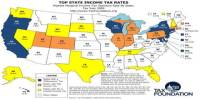Participatory Poverty Assessment (PPA) is a method for understanding poverty and its numerous dimensions through the eyes of those who live with it. It is a method of studying and decreasing poverty that incorporates the poor’s perspectives. This strategy recognizes that people living in poverty are the best experts on their own experiences, and they can contribute useful ideas and data to help inform poverty reduction and development initiatives.
PPAs are commonly employed in international development and are carried out in collaboration with poor communities and people. PPAs aim to better understand the poor, give them more say in choices that affect their lives, and improve the effectiveness of poverty-reduction initiatives. PPAs are viewed as supplements to standard household surveys since they aid in the interpretation of survey results and, by being more open-ended, strive to capture the experiences of the poor.
Here are some key aspects of Participatory Poverty Assessment:
- Community Involvement: PPA involves active participation of people living in poverty. It aims to give them a voice and the opportunity to share their experiences, aspirations, and challenges.
- Qualitative Research: Focus group talks, participatory rural appraisal, semi-structured interviews, and case studies are common qualitative research methodologies used by PPAs. These strategies aid in the collection of rich and thorough information regarding the multifaceted facets of poverty.
- Local Context: PPAs consider the local context and cultural peculiarities of the groups under study. They acknowledge that poverty is not a consistent concept that varies widely from location to place.
- Multi-Dimensional Analysis: PPAs consider poverty in all of its dimensions, moving beyond income and economic indices. They investigate how social, cultural, political, and environmental factors contribute to or alleviate poverty.
- Community Mapping: Community mapping is a typical technique used in PPAs in which participants construct visual representations of their community’s assets and difficulties. This can aid in identifying areas for improvement.
Governments, non-governmental organizations, and international development agencies have routinely employed participatory poverty assessments to better understand poverty and plan more targeted and successful responses. These assessments can provide a more thorough and context-specific understanding of the problems and opportunities for poverty reduction by incorporating those who are directly affected by poverty.
















